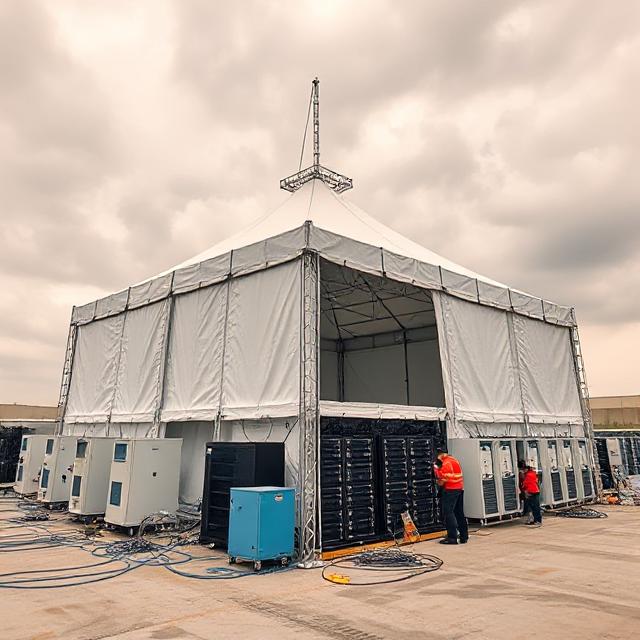
TL;DR:
- Meta is accelerating its AI infrastructure by erecting temporary tent data centers to quickly increase compute capacity.
- The tents are part of a fast deployment strategy while permanent facilities are still under construction.
- Meta’s upcoming Hyperion data center, planned for Louisiana, aims to reach 2 gigawatts capacity by 2030.
- This urgency reflects Meta’s push to catch up with AI competitors like OpenAI, xAI, and Google AI.
- The tent-based design prioritizes speed over aesthetics or redundancy, relying on prefabricated power and cooling modules without diesel generators.
Meta’s Tent Strategy to Boost AI Computing Power
Meta Platforms, led by CEO Mark Zuckerberg, is rapidly expanding its AI infrastructure to keep pace with rivals such as OpenAI, xAI, and Google. According to industry reports from SemiAnalysis and Business Insider, the company has resorted to using large temporary tents to house servers and boost compute capacity while its permanent data centers remain under construction.
These tented data centers serve as quick-to-deploy compute hubs, allowing Meta to increase AI processing power without waiting for traditional, time-consuming construction projects to complete.
Hyperion: Meta’s Ambitious Data Center in Louisiana
Meta also announced plans for a massive new data center called Hyperion, expected to be located in Louisiana. A Meta spokesperson, Ashley Gabriel, confirmed to TechCrunch that Hyperion is designed to reach a capacity of 2 gigawatts by 2030, significantly boosting the company’s ability to train and run large AI models.
The urgency behind these efforts is clear: Meta is racing to build the infrastructure necessary for advanced AI development, making speed and scalability top priorities over design elegance or backup systems like diesel generators.
Meta’s AI Data Center Expansion
| Metric | Details | Source |
| Temporary AI Compute | Tent-based data centers for fast compute capacity deployment | SemiAnalysis |
| Hyperion Location | Louisiana | TechCrunch |
| Hyperion Capacity Goal | 2 gigawatts by 2030 | TechCrunch |
| Competitors Pressuring | OpenAI, xAI, Google AI | Business Insider |
| Design Priorities | Speed over redundancy; no diesel generators; prefabricated power and cooling modules | SemiAnalysis |





